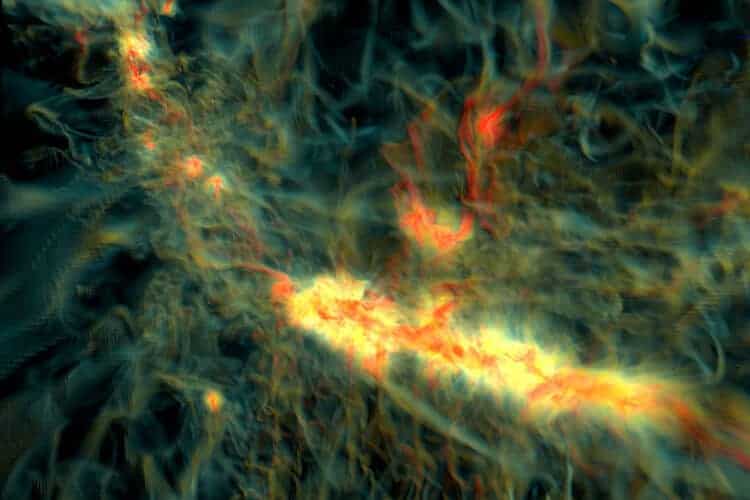Like fireworks bursting through a smoky haze, protostars ignite within colossal filaments of gas in a new supercomputer simulation of stars forming inside molecular clouds.
The simulation covers 700,000 years, and is based on computer code created by UC Berkeley astrophysicist Richard Klein to capture the effects of radiation, magnetic fields, gravity and other physical phenomena and paint a realistic portrait of star formation. Klein, who also has an appointment at Lawrence Livermore National Laboratory, worked with Chris McKee, a UC Berkeley professor of physics and of astronomy, research specialist Pak Shing Li and their students at UC Berkeley.
Run on NASA’s most powerful supercomputer, Pleiades, at the Advanced Supercomputing facility at NASA’s Ames Research Center, the simulation will help answer fundamental scientific questions about the processes involved in the formation of individual stars and stellar clusters in our own galaxy and other galaxies.
The evolution of a young star cluster beings with a giant cloud of interstellar gas and dust collapsing under the force of gravity. Inside the cloud, turbulent clumps of gas form and then collapse. The collapsed clumps form star clusters, and then the magnetized, swirling cores further evolve to form individual or small groups of stars.
The science team is enhancing the code to produce new simulations that will allow them to zoom in on the formation of stellar disks — pancake-shaped disks of gas and dust surrounding protostars that are believed to be the first stage of planet formation.
If our reporting has informed or inspired you, please consider making a donation. Every contribution, no matter the size, empowers us to continue delivering accurate, engaging, and trustworthy science and medical news. Independent journalism requires time, effort, and resources—your support ensures we can keep uncovering the stories that matter most to you.
Join us in making knowledge accessible and impactful. Thank you for standing with us!

